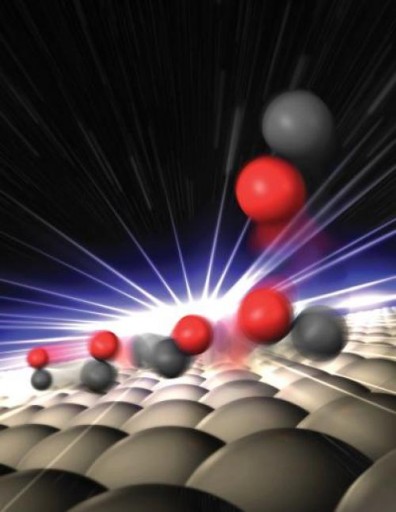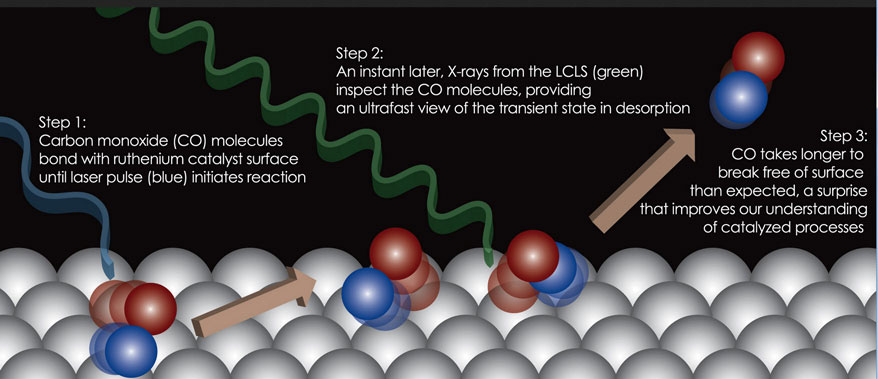Seeing a chemical reaction in real time
March 19, 2013

New experiments at the Linac Coherent Light Source took an unprecedented look at the way carbon monoxide molecules react with the surface of a catalyst in real time (credit: Greg Stewart/SLAC National Accelerator Laboratory)
The ultrafast, ultrabright X-ray pulses of the Linac Coherent Light Source (LCLS) have enabled unprecedented views of a catalyst in action, an important step in the effort to develop cleaner and more efficient energy sources.
Scientists at the U.S. Department of Energy’s (DOE) SLAC National Accelerator Laboratory used LCLS, together with computerized simulations, to reveal surprising details of a short-lived early state in a chemical reaction occurring at the surface of a catalyst sample.
The study offers important clues about how catalysts work and launches a new era in probing surface chemistry as it happens.
Catalysts, which can speed up chemical reactions and make them more efficient and effective, are essential to most industrial processes and to the production of many chemicals. Catalytic converters in cars, for example, reduce emissions by converting exhaust to less toxic compounds.
Understanding how catalysts work, at ultrafast time scales and with molecular precision, is essential to producing new, lower-cost synthetic fuels and alternative energy sources that reduce pollution, said.Anders Nilsson, deputy director for the Stanford and SLAC SUNCAT Center for Interface Science and Catalysis and a leading author in the research, published March 15 in Science.
In the LCLS experiment, researchers looked at a simple reaction in a crystal composed of ruthenium, a catalyst that has been extensively studied, in reaction with carbon monoxide gas. The scientists zapped the crystal’s surface with a conventional laser, which caused carbon monoxide molecules to begin to break away. They then probed this state of the reaction using X-ray laser pulses, and observed that the molecules were temporarily trapped in a near-gas state and still interacting with the catalyst.
“We never expected to see this state,” Nilsson said. “It was a surprise.”
Not only was the experiment the first to confirm the details of this early stage of the reaction, it also found an unexpectedly high share of molecules trapped in this state for far longer than what was anticipated, raising new questions about the atomic-scale interplay of chemicals that will be explored in future research.
